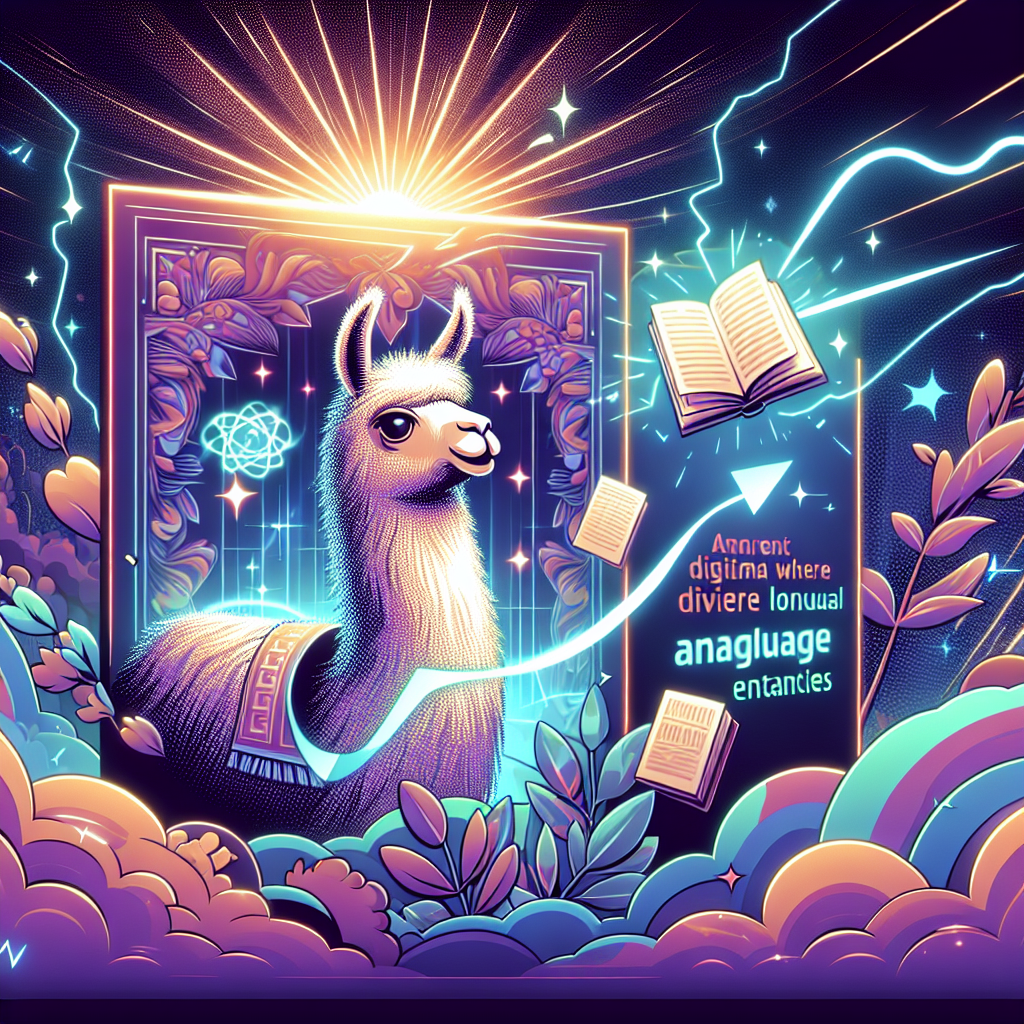Understanding Facebook LLaMA: Unpacking the Future of AI Language Models
Introduction
Artificial intelligence (AI) has been transforming various sectors, and one of the most significant advancements in recent years is the development of large language models. These models have revolutionized the field of natural language processing (NLP) by enabling machines to understand, generate, and interact with human language more effectively. Among these models, Facebook’s LLaMA (Large Language Model Meta AI) has gained considerable attention for its capabilities and potential applications. This blog post aims to provide an in-depth look at Facebook LLaMA, its technical specifications, comparisons with other models, use cases, implications for the tech industry and society, and the future of AI language models.
What is Facebook LLaMA?
Facebook LLaMA is a family of large language models developed by the research team at Meta AI. These models are designed to process and generate human-like language, leveraging vast amounts of data to learn patterns and relationships within language. The development of LLaMA reflects Meta’s commitment to advancing AI technologies that can be used across various applications, from content creation to customer service.
Technical Specifications and Architecture
LLaMA models come in different sizes, with the most commonly referenced being the 7 billion parameter model (llama-7b). This model is trained on a large corpus of text data, allowing it to capture a wide range of linguistic nuances and generate coherent text. The architecture of LLaMA is based on the transformer model, which is a state-of-the-art design for sequence-to-sequence tasks like language translation and text generation.
To interact with LLaMA, developers can use libraries like Hugging Face’s transformers, which provide pre-trained models and tokenizers. Here’s an example of how to use LLaMA for text generation:
import torch
from transformers import LlamaTokenizer, LlamaForCausalLM
# Load pre-trained LLaMA model and tokenizer
tokenizer = LlamaTokenizer.from_pretrained('facebook/llama-7b')
model = LlamaForCausalLM.from_pretrained('facebook/llama-7b')
def generate_text(prompt: str, max_length: int = 50) -> str:
"""
Generate text using the LLaMA model.
Parameters:
- prompt: The starting text input to the model.
- max_length: The maximum number of tokens to generate.
Returns:
- generated_text: The completed text generated by the model.
"""
# Encode the prompt and convert to tensor
input_ids = tokenizer.encode(prompt, return_tensors='pt')
# Generate text
with torch.no_grad():
output = model.generate(input_ids, max_length=max_length, num_return_sequences=1)
# Decode the output tensor to text
generated_text = tokenizer.decode(output[0], skip_special_tokens=True)
return generated_text
# Example usage
prompt = "The future of AI language models"
result = generate_text(prompt)
print(result)
This code snippet demonstrates how to load a pre-trained LLaMA model and generate text based on a given prompt.
Comparison with Other Language Models
LLaMA can be compared to other prominent language models like GPT-3, GPT-4, and BERT. Each of these models has unique strengths and weaknesses:
- GPT-3 and GPT-4: Developed by OpenAI, these models are known for their ability to generate coherent and contextually relevant text. They are larger than LLaMA, with GPT-4 being one of the most advanced models available.
- BERT: Developed by Google, BERT is primarily used for understanding language rather than generating it. It excels in tasks like question answering and sentiment analysis.
LLaMA’s advantage lies in its accessibility and performance on a wide range of tasks, making it a versatile tool for both research and practical applications.
Use Cases and Applications of LLaMA
LLaMA has numerous applications across various industries:
- Healthcare: LLaMA can be used to generate medical summaries, assist in clinical decision-making, and help with patient communication.
- Finance: It can aid in generating financial reports, analyzing market trends, and automating customer support.
- Content Creation: LLaMA can assist writers by suggesting ideas, outlining articles, and even drafting content.
These applications highlight the potential of LLaMA to streamline processes and enhance productivity in multiple sectors.
Implications for the Tech Industry and Society
The deployment of LLaMA and similar AI models raises important ethical considerations:
- Job Displacement: As AI takes over more tasks, there is a risk of job displacement, particularly in sectors where automation is more feasible.
- Bias and Fairness: AI models can perpetuate biases present in their training data, which must be addressed to ensure fairness and equity.
- Personalization: AI can offer personalized experiences, enhancing user engagement and satisfaction.
These implications underscore the need for careful planning and regulation as AI technologies become more pervasive.
Future of AI Language Models
The future of AI language models is promising, with ongoing developments in areas like multimodal interaction and agentic AI. Multimodal AI, for instance, can process information from text, images, audio, and video, enabling more intuitive interactions[1]. Agentic AI, which involves autonomous AI agents performing tasks independently, is expected to further transform industries by automating complex workflows and decision-making processes[3][5].
As AI continues to evolve, community and open-source contributions will play a crucial role in driving innovation and ensuring that these technologies benefit society as a whole.
Conclusion
Facebook LLaMA represents a significant step forward in AI language processing, offering a powerful tool for generating and understanding human language. Its applications span multiple industries, from healthcare to content creation, and its implications for the tech industry and society are profound. As AI continues to advance, it is essential to address ethical concerns and ensure that these technologies are developed and deployed responsibly.
External Links:





